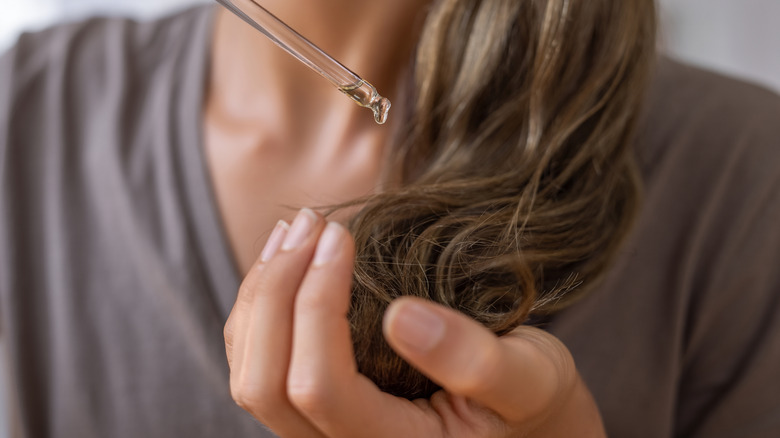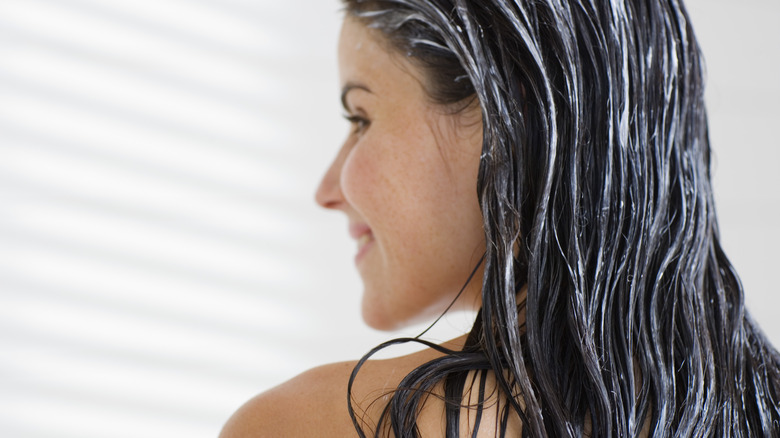What's Your Hair Porosity & Why Is It So Important?
We may receive a commission on purchases made from links.
You may know your specific hair type and texture, but how about your hair's porosity? Porosity describes how porous the hair is; in other words, it's the hair's ability to absorb and hold moisture, whether it's water, oil, or hair products. Each strand of our hair is made up of layers, the outermost being the cuticle, which is composed of overlapping cells. The cuticles look a bit like scales when viewed close up with a microscope. Curly hair types are naturally higher in porosity compared to straight hair, but high or low porosity isn't always exclusive to one type of hair. It often depends on genetic factors and the way you style and treat your hair.
When hair has low porosity, the cuticles are bound closely together. This makes it a bit difficult for moisture to reach the hair's deepest layer. With high porosity, the cuticles are more widely spread out. This type of hair can soak up products well but it's not always able to hold them in because the hair cuticles are spread out widely. It can sometimes feel dry and frizzy. In the middle of the spectrum, hair with cuticles that aren't too loosely or tightly bound is considered medium or normal porosity, which can retain moisture fairly well. Understanding your own porosity level can help you to better care for your hair's needs.
How do you know your porosity?
If you're not quite sure where your hair falls on the porosity spectrum, there's an easy way to test out your hair at home. Hair care experts will commonly recommend first combing your hair to shed a few strands and then dropping the strands into a glass of water. If the hair stays floating on top, your hair has low porosity. If it sinks immediately, you have high porosity. The hair will float and then slowly sink if it has a medium porosity.
Even without a hair test, you might already be able to notice the way your hair reacts to certain products. Hair with high porosity can soak up products well but it may have trouble being able to retain that moisture due to the cuticles being spaced widely apart. Hair with low porosity often has trouble absorbing the product, and it may feel like the product is sitting on top rather than being retained.
Hair-care based on your porosity
It's important to understand your hair's porosity so you can know how to properly care for it. If you've noticed that your shampoo and conditioner aren't doing their job, it might be because they're not the right choice for your hair's porosity. Medical scientist and hair trichologist Dr. Isfahan Chambers-Harris explained to Byrdie that it may help to use a pre-shampoo oil on hair with low porosity to give the hair a moisture boost before shampooing. Use a moisturizing shampoo like Garnier Fructis Curl Nourish Sulfate-Free and Silicone-Free Shampoo that doesn't strip the hair.
High porosity may be a sign that you're dealing with hair damage, whether it's from coloring, heat, or harsh treatments. It's a good idea to use shampoos that moisturize the hair without drying it out, along with repairing conditioners that can help close the cuticles. We recommend trying out L'Oreal Paris Elvive Total Repair 5 Repairing Shampoo for Damaged Hair and Neutrogena Triple Moisture Daily Deep Conditioner.
If you're in the middle with medium porosity hair, you can maintain your hair health by using deep conditioning products. According to salon owner and educator Robin Groover, using a hair mask with Moroccan clay and shea butter can help remove impurities while replenishing the hair's moisture, as she told Byrdie.


